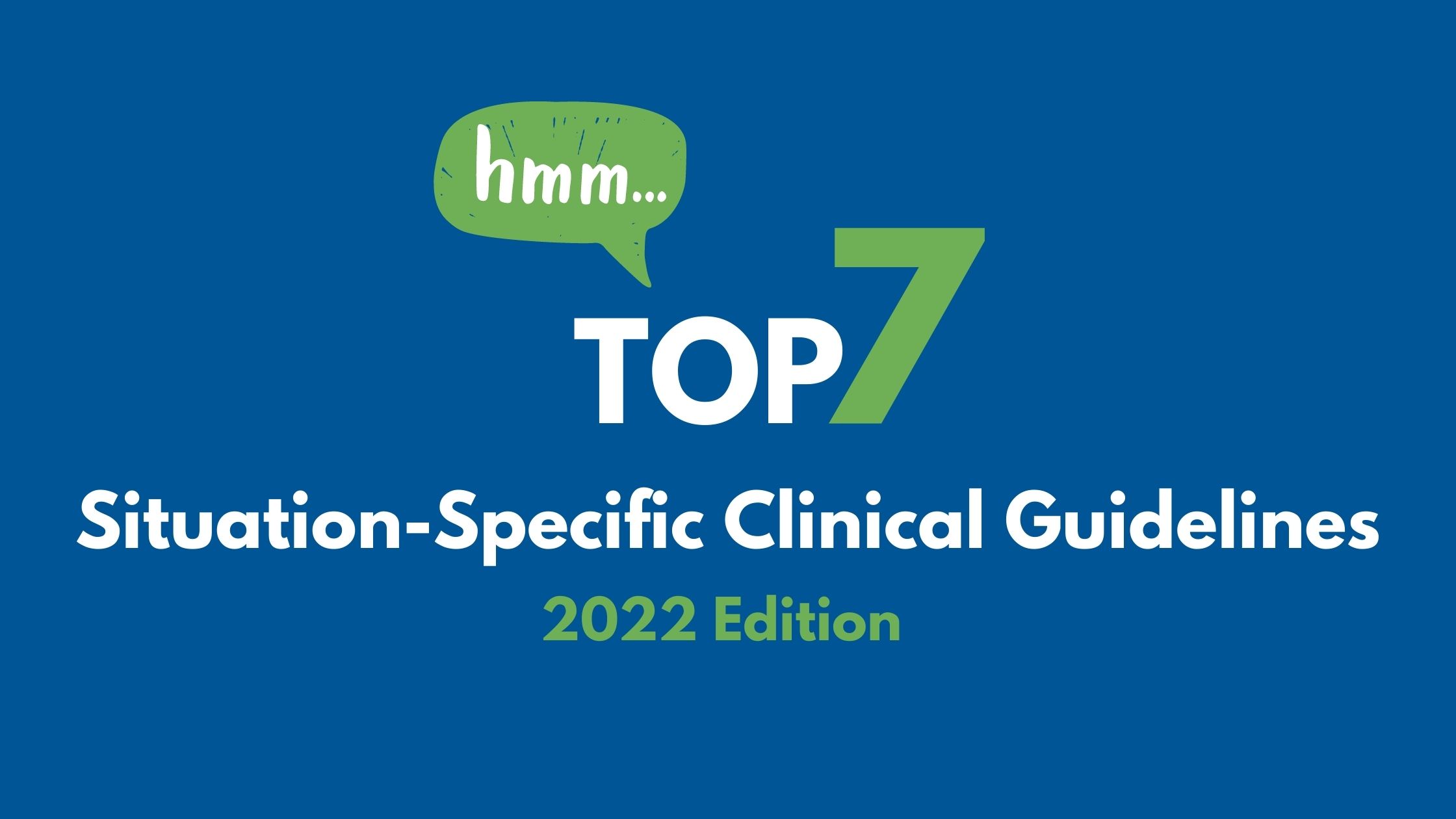
As most know, clinical guidelines are meant to translate the best available evidence into the best available clinical practice. The best available evidence is commonly in the form of randomized controlled trials (RCTs), and most RCTs study homogenous populations. This of course makes sense, because the trials want to be as controlled as possible and limit confounding factors. In real life practice, though, patients are anything but homogenous, and rarely identical to the study populations. Since every patient has unique medical needs, we thought it would be good to look at guidelines that offer guidance for some oddly-specific patient populations.
We are going to take a closer look at some of the guidelines published this year that buck the trend of broad recommendations, and instead, are exceptionally specific.
While providing preventative prophylaxis against DVT/PEs for post-surgical, medically ill and critically ill patients is common practice in US medicine, the American Society of Hematology (ASH) also gave recommendations for a less common subgroup of the population: long-distance Latin American travelers. For those long-distance travelers with high risk for VTE, such as post-partum women and patients with active malignancy, ASH conditionally recommends thromboprophylaxis with compression stockings or LMWH. However, the short-distance and/or low risk of VTE Latin American travelers can travel freely without thromboprophylaxis. Happy travels to those going on short or long distances!
Though the title is geographically, medically, and infectiously specific, this guideline from WHO discusses the treatment of co-infection with HIV and Visceral Leishmaniasis (VL) in areas endemic for Leishmania donovani. While the guidelines may be targeted for a rather specific subgroup of the population, the WHO recommends prompt treatment be provided considering VL is an AIDS-defining illness, and VL with HIV co-infections act synergistically in suppressing the immune system, resulting in higher rates of treatment failure and higher mortality rates than having either infection in isolation.
3) Fasting for Religious Purposes After Surgery
We all know the rule of fasting before surgery, but what about fasting after? The American Society for Metabolic and Bariatric Surgery (ASMBS) took on the oddly-specific task of providing recommendations for patients post-operatively fasting for religious purposes. Stratifying the high risk patients (recommended not to fast) from the low risk patients (which they recommend fasting with guidance), the ASMBS sought to provide evidence-based recommendations for religious fasting specifically following a metabolic or bariatric procedure – but found this search was a little too specific. As a result, the guideline more broadly incorporated evidence for and from post-operative fasting patients following either metabolic/bariatric surgery or non-metabolic/bariatric surgery.
Another oddly specific guideline on VTEs was published this year by the American Physical Therapy Association (APTA), and provides guidance on the role Physical Therapists play the prevention and management of VTEs. From mechanical compression prevention measures to screening for high risk lower extremity DVT patients, physical therapists play a vital role in VTE management as part of an interdisciplinary medical team.
5) Postoperative Opioid Prescribing After Female Pelvic Medicine and Reconstructive Surgery
Balancing the implications of the opioid crisis with the necessity for adequate postoperative pain control, the American Urogynecologic Society (AUGS) published guidelines on the prescribing of opioids specifically for your post-operative female pelvic reconstructive surgery patients. Providing tailored recommendations for both opioid-naive patients and those with psychosocial/medical factors that may influence a higher opioid requirement, these guidelines make it easy to appropriately prescribe opioids to this uniquely specific surgical subgroup.
Specifically focused on some of our littlest patients, the Society of Critical Care Medicine (SCCM) published guidelines that incorporate both pharmacological and non-pharmacological approaches for the prevention and management of pain, agitation, neuromuscular blockade, and delirium in critically ill pediatric population.
Focused on the perioperative evaluation of older adults – more specifically, frail older adults – more specifically, frail older adults requiring surgery – and even more specifically, frail older adults requiring colorectal surgery – this guideline from the American Society of Colon and Rectal Surgeons (ASCRS) provides recommendations for the evaluation and management of the frailty in older adult colorectal surgery candidates.
Whether you’re looking for management recommendations for a niche subgroup of surgical candidates, or you need guidance on treating co-infections in geographically-unique areas, you can almost guarantee there is a clinical practice guideline ready to reference for any of your exceptionally-specific patient populations.
Authored by:
Dr. Tabitha Michaud, MD, Clinical Content Coordinator at Guideline Central
Copyright © 2022 Guideline Central, All rights reserved.